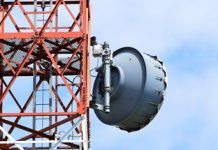NEC Corporation has announced the development of a Device-to-Device communication technology that enables emergency response personnel, such as police and firefighters, to transmit high quality images from the scene of a disaster or accident when outside of the service area of the Public Safety Long Term Evolution (Public Safety LTE: PS-LTE) network. Images are essential to enabling authorities to make swift and accurate assessments in response to large-scale disasters and in the provision of security for major events.
NEC’s newly developed technology supports the reliable transmission of these images by enabling terminals outside of the PS-LTE network service area to detect terminals within the service area, and then access the network via the terminal that provides the fastest communication with base stations. NEC confirmed the performance of this technology in a simulated disaster relief scenario, where approximately 90% of terminals located indoors, which tend to fall outside of the service area, achieved communications sufficient for the transmission of images.
In LTE networks, if a terminal falls outside of its service area, other terminals may act as relay stations between the isolated terminal and connected base stations. However, when selecting a relay terminal it has conventionally been difficult to detect the communication route (relay link) that enables the highest quality images.
NEC’s new technology was developed using the Relay Link Throughput Estimation Method, which estimates communication throughput based on the quality of wireless communications, taking into account the differences in the resources available for wireless communications as well as modulation/coding schemes, and then integrates the relay link. With this technology, the communications speed from an isolated terminal cooperating with a relay terminal to connect to a base station can fully be estimated, and the “total communication speed” can be more accurately assessed.
The relay terminal estimates the upstream speed, and the terminal outside the service area estimates the speed of communications between the terminals. Based on this result, the throughput of the relay link (total communication speed from the terminal to the base station) is calculated, and a relay terminal capable of generating the highest speed is selected.







